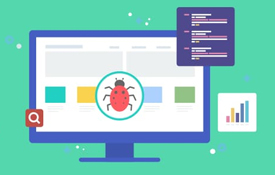Everything is mobile. What else can we say? Everything. If your product or service is currently not, it will be very soon. As Apple says: “There’s an app for that.” There is an app for everything. The race for mobile apps has consumed the software development world.
I did a few projects at Palm Computing in the late 90s. Their Palm Pilot became the first commercially successful handheld computer. It was an exciting time. And still, to have so many people around the world buying these devices seemed a bit odd─why would so many people want to carry around a little computer with them? At the same time, I did a few projects at Unwired Planet (which became Openwave) as well. Openwave is historically significant in its introduction of the Mobile Internet. With its implementation of WAP (wireless application protocol) mobile phones with a browser were an odd new invention where you could have the internet on your phone─anywhere!
Now, these two work experiences seem funny themselves; it seems like ancient technology despite its introduction less than a dozen years ago! The world has truly changed. It now seems odd to not have a smart phone. But this new revolution is not only about phones. The 2010 US Census Bureau canvassing of over 300 million Americans was completed using hand held computers. It saved millions of dollars in paper, data correlation and salary costs. This success was not without problems. There were data transmission problems in rural areas and there were update and patch problems that were said to cause “dramatic dysfunction.” But still, this hand held computed was a big success, saved millions of dollars and revolutionized the census process.
With these “first of their kind devices,” testing needed new and innovative thinking. Testing devices, operating systems, applications, performance, connectivity, download speeds, security, carriers, and more, were new to most testers but very often carried out by previously skilled black box, desktop testers. The testing effort required quickly learning new technologies, trying to find tools on new platforms, and leveraging previous testing experience to rapidly test, improve quality and minimize risk. Now those same test jobs seem slow and simple. The rate of change has exponentially increased. The speed of code and product delivery has increased. Competition has significantly increased. Our test strategies and the testing itself must be more dynamic, agile, responsive, automated and effective. This will not be easy.
We want to get you started on the right path! In this issue, Gal Tunik addresses the importance of test automation in mobile applications, John Roets discusses what matters in building a test matrix for your mobile testing, Robert Binder answers questions from testers currently working on mobile projects, Blogger of the Month HarshalKharod offers a checklist for testers on what they should look for while testing and our 2010 Global Survey series continues focusing on respondents and their common challenges in testing management politics.
We will continue providing information in this budding area of testing in the near-future. We are sure to have another issue on mobile testing in 2012!



















